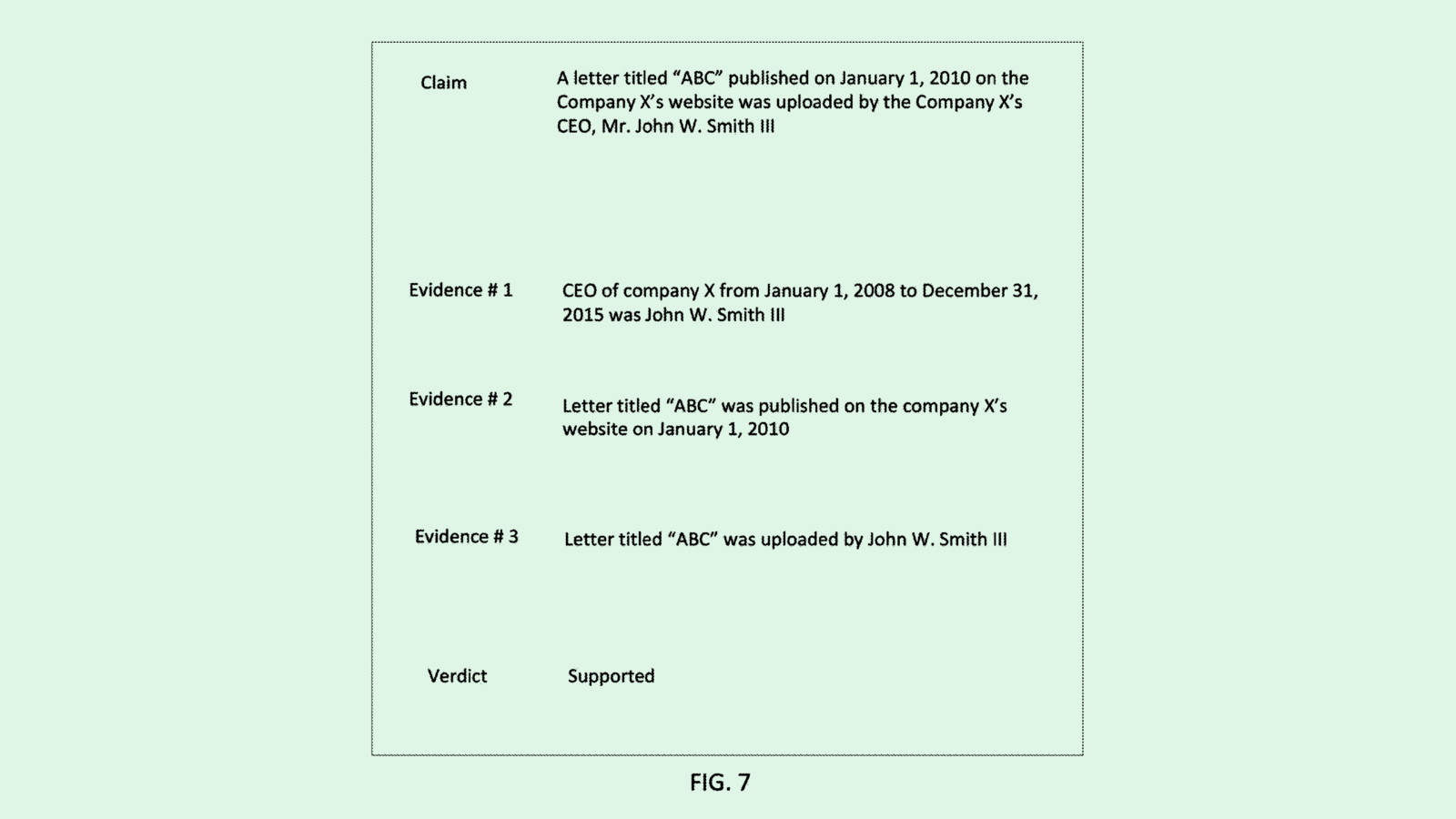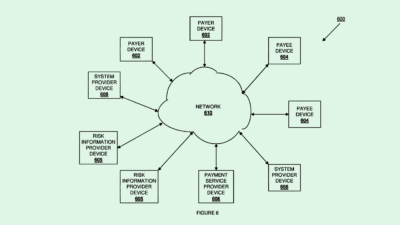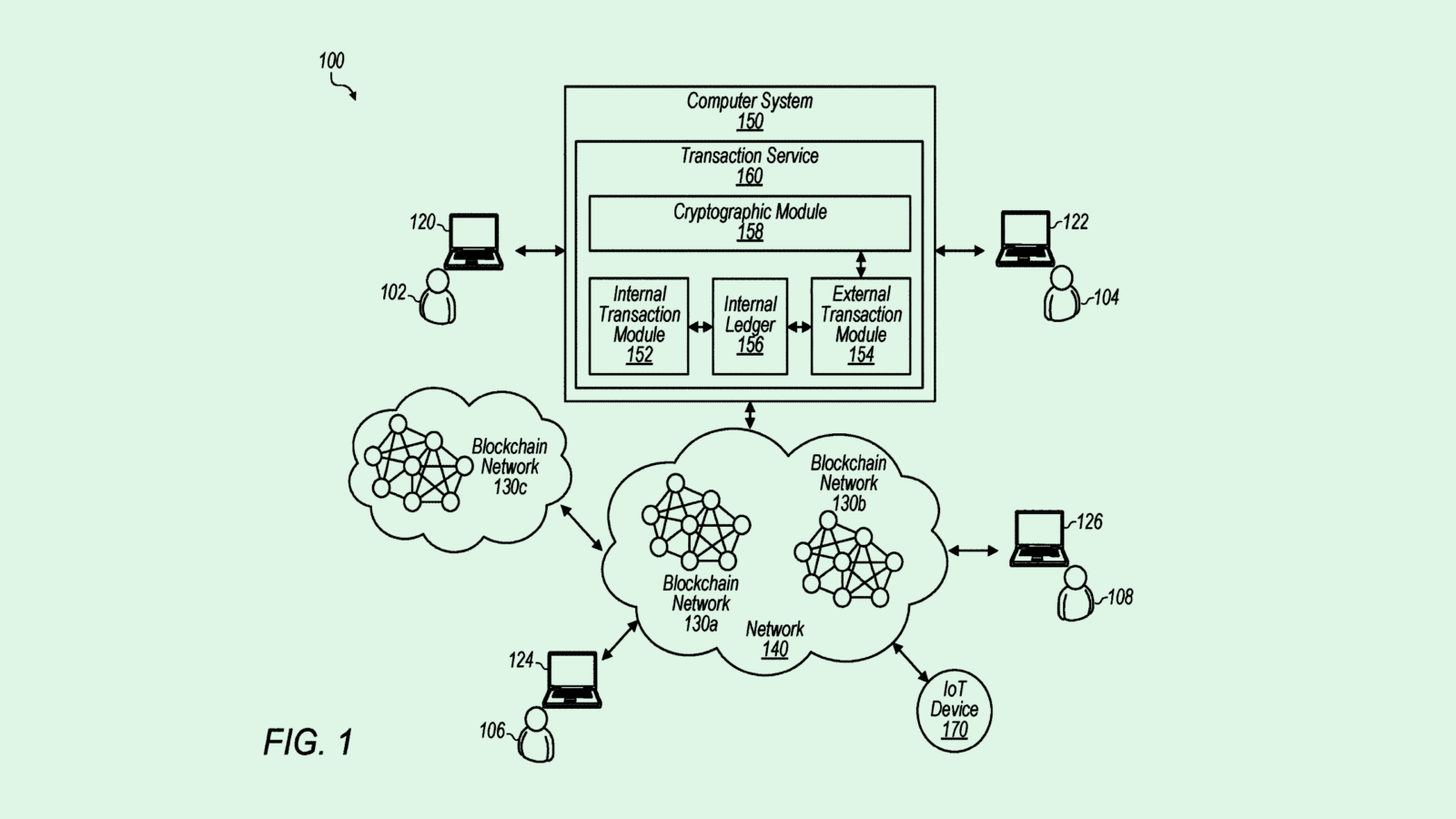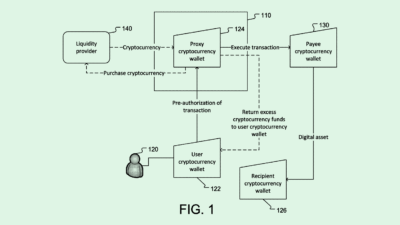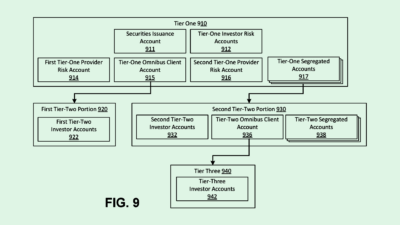Sign up to uncover the latest in emerging technology.
Plus: Stripe reconciles; Tesla’s eyes on the road
Happy Thursday, and welcome to Patent Drop!
This morning, we’re taking a look at why eBay may be bringing blockchain into its logistics process, Stripe’s plans to make the accounting department’s life way easier, and Tesla’s tweaks to its driverless cars.
But before we get into that, today’s edition is sponsored by RYSE. Their patented Smart Shade tech is bringing the convenience and cost-savings of automated window shades to homes and businesses everywhere. As the only design to retrofit existing window shades, RYSE is making the next big leap in Smart Home technology accessible at a small fraction of competitors’ pricing. Learn more here.
#1. EBay’s blockchain logic
EBay wants to chain your personal data to the blockchain.
The company filed a patent for tech that secures shipping interactions using blockchain. The tech works by securing a user’s private information, such as name and address, on a blockchain, and automatically generating a shopping label with a “machine-readable pointer” to the blockchain address.
First, eBay’s tech will create a shipping label for sellers with a “data block on blockchain” that includes the personal information of the buyer. The package then gets sent to a distributor, who will scan the label to obtain the location of the buyer from the blockchain address to complete the shipment. This way, the seller does not know the location of the buyer, and vice versa.
“Shipping labels often expose a lot of private information, e.g. shipper’s name and address, recipient’s address and name, in plain text that can be read by anyone with access to the package,” eBay said in its filing. “This information can be used for nefarious purposes such as identity theft or profiling.”

EBay’s tech is novel in that it tackles privacy both on the blockchain and on physical labels, said Thorne Melcher, software engineer and tech lead at NFT creative studio Smol Farm. If implemented right, Melcher said, this could provide “incredibly promising architecture for logistics.”
“This seems like a critical step forward in making blockchains work for physical interactions while maintaining privacy of those involved,” Melcher said in an email.
Though eBay positioned this patent as a way to preserve buyer privacy and stop shipping mishaps, the company could use blockchain for so much more, said Daniele Servadei, CEO and co-founder of e-commerce platform Sellix, such as decentralized data storage, immutable records or smart contracts between buyers and sellers.
“When used in e-commerce, blockchain technology can secure sensitive data such as customer information, transaction details, and supply chain data,” Servadei said in an email. “ It allows for greater control and privacy over data by users, and may potentially reduce fraud and cyber-attacks on e-commerce platforms.”
EBay has seemingly been blockchain-obsessed for the past year. In June, the company acquired NFT marketplace KnownOrigin for an undisclosed amount. While the company doesn’t currently accept crypto payments, its CEO hinted in an interview with The Street last year that it was considering allowing crypto payments, and a recently disclosed patent filing indicates that the company has been looking into a crypto conversion system. The company also posted several NFT and Web 3.0-related job openings in recent weeks.
Taken together, eBay’s blockchain strategy seems to be to come at it from all angles. Why? EBay was a hallmark of the early-aughts internet and the first days of e-commerce – so it might see blockchain as its ticket to the future, no matter which angle it comes from.
#2. Stripe from accounting
Stripe wants to make your accounting department’s job way, way easier.
The company is seeking to patent tech for what it calls “auto-reconciliation.” Essentially, this tech works by auto-generating a virtual account number for customers to perform push payments, such as wire transfers and direct deposits. This way, invoices don’t just get lost in the ether: A payment processor can automatically connect that account number to an invoice to avoid confusion.
“While payment processors seek to provide merchants with an easy and efficient mechanism for collecting payments from customers, collecting such payments may encounter difficulties for various reasons,” Stripe “Specifically, it can be challenging to match up these push payments with specific invoices or payers,” Stripe said in its filing.”
This tech solves the pesky problem of reconciliation: i.e. matching payments with their proper invoices to check for discrepancies. For example, say a company owes a vendor $3,000 for a service, but the company accidentally only pays $2,500 – Stripe’s system would be able to automatically reconcile that by connecting the virtual account number with the proper invoice, and get the proper vendor paid.

Reconciliation is a major problem in the fintech space, Emily Man, investor at Redpoint Ventures, told me. There generally aren’t robust systems to properly track the movement of money, she said, so reconciliation takes a good amount of manual work from accounting teams. A system like Stripe’s has the ability to save those teams dozens of hours.
“Money movement can be really complex,” Man said, “Sometimes payments just get lost, they don’t work properly, or something goes wrong somewhere in the stack. What’s really powerful about reconciliation is that it’s creating a system for making sure that those problems go away, and when they do arise, being able to investigate them more properly.”
Adding a service like this makes sense for Stripe, given that as a payment processor that handles hundreds of millions of transactions per day. Even though Stripe wouldn’t be the one doing the reconciliation, adding a system that can save its customers massive amounts of time by automatically solving those issues might lead a merchant to pick its product over a competitor like Square or Venmo.
And attracting more customers with reconciliation services definitely wouldn’t hurt: The company cut its valuation 10% to $50 billion amid its struggles to fundraise in the past several months, The Information reported earlier this week.
SPONSORED BY RYSE
Intellectual Property = A Window Of Opportunity
Locking up patents in the early stages of a developing industry is a certified gold mine.
RYSE understands that. After developing their one-of-a-kind automated window shade technology, RYSE got to work securing patents on their proprietary tech.
With 6 patents locked up and 3 more pending, RYSE has now won an Amazon Patent Court Judgment, allowing them to remove knock-off products in rapid-fire fashion. But they’re not just IP enthusiasts. RYSE also has the tech and market opportunity to back it up:
RYSE created the only retrofit design for automated window shades.
Competitor pricing: up to $1,000 per window. RYSE pricing: $169.
The SmartShades market is witnessing a remarkable 55% annual growth.
Not to mention the exceptional energy efficiency metrics 一 RYSE automated shades can cut cooling costs by up to 24% and lighting costs by up to 74%.
#3. Tesla’s self-driving tweaks
Tesla has gotten into some hot water with regulators about its self-driving feature. Recent patent filings reveal that it wants to start behaving better.
The auto manufacturer filed two patents over the summer for tech to improve the autonomous driving of its vehicles. For starters, it filed a patent for an “adjustable virtual camera” used in autonomous driving. This tech works by having sensors, such as cameras, collect image data about surrounding objects and feed them to a machine learning model which stitches all of that image data together. This is then fed to a virtual camera that can be set at different vantage points, such as a certain height above the car, or a panoramic, 360-degree view.
This tech essentially allows the Tesla’s image sensors to not have to work as hard: one goal of implementing this virtual camera, Tesla said, was to stop the need to make its image sensor hardware more complex “while enhancing accuracy.”
In its filing, Tesla said that the neural networks of autonomous vehicles often “rely upon costly, or error-prone, sensors. Additionally, such neural networks may lack accuracy with respect to detecting and classifying moving and stationary (e.g., fixed) objects causing deficient autonomous or semi-autonomous driving performance.”
The company also filed a patent for a vision-based machine learning model to aggregate “static objects,” or markings like lane lines, crosswalks, and bike lanes. It works by using images from sensors positioned outside of the vehicle to create an aggregated projection of what those sensors see, in order to present a better birds-eye view of the road.

Though these patents were filed in August, the company has been butting heads with the National Highway and Transportation Safety Authority for years over its self-driving feature. The company has faced several recalls, and the NHTSA has a number of pending investigations into its vehicles, including a 2021 probe of 830,000 vehicles following a string of crashes into emergency vehicles.
Most recently, the company issued a recall notice for more than 362,000 vehicles earlier this month and paused installations of its Full Self-Driving beta software in the U.S. and Canada this week after the NHTSA said the system poses a crash risk to drivers.
In an interview last year, Elon Musk called the full self-driving feature “essential” and “the difference between Tesla being worth a lot of money or worth basically zero.” The company’s latest patents might be proof that a better version is in the works.
Plus, getting rid of the need for “costly, or error-prone” sensors with these patents might help in enabling the company to mass-manufacture its lower-cost next-gen vehicle that it hinted at during its Investors Day showcase yesterday.
Extra Drops
We’ve got a few more for you.
Google wants to hear you out. The company filed a patent for tech that can detect your interest in certain media by observing when you turn your volume up and down. So if that TikTok really made you listen up, Google’s taking notes.
Netflix wants to give you the perfect view. The company filed a patent for “automated video cropping.” Essentially, this tech helps make sure that your view fits your screen no matter how you’re watching.
Ford is getting into last-mile delivery. The company wants to patent tech that generates a travel route for delivery robots, which includes guiding it through “traversable areas” so it can get to their package drop-off spot.
What else is new?
Two Democratic Senators urged Meta to not release Horizon Worlds, its metaverse app, to teens, due to concerns over its track record for child safety on its other platforms.
SpaceX and NASA launched a team of four astronauts on a six-month journey to the International Space Station following delays.
Jamie Siminoff, CEO of Amazon’s Ring, will step down on March 22. Elizabeth Hamren, former COO of Discord, will take his role.
Have any comments, tips or suggestions? Drop us a line! Email at admin@patentdrop.xyz or shoot us a DM on Twitter @patentdrop.

